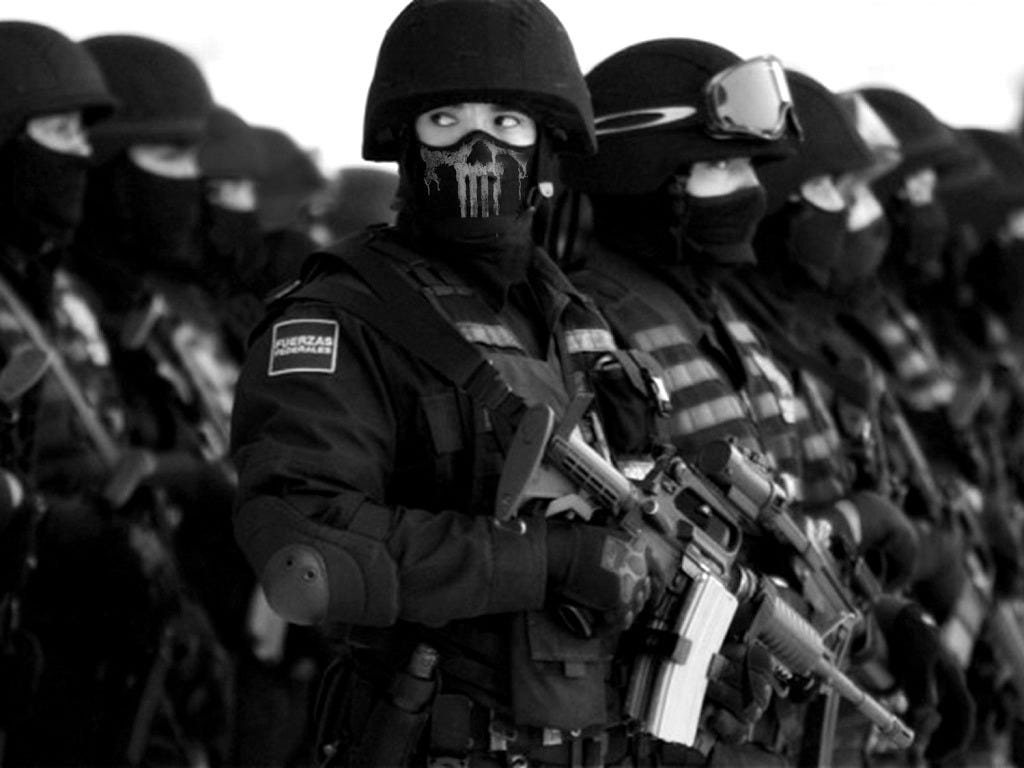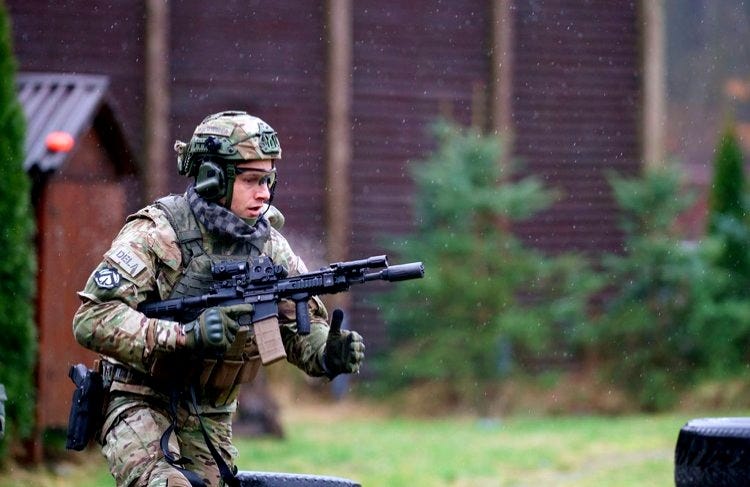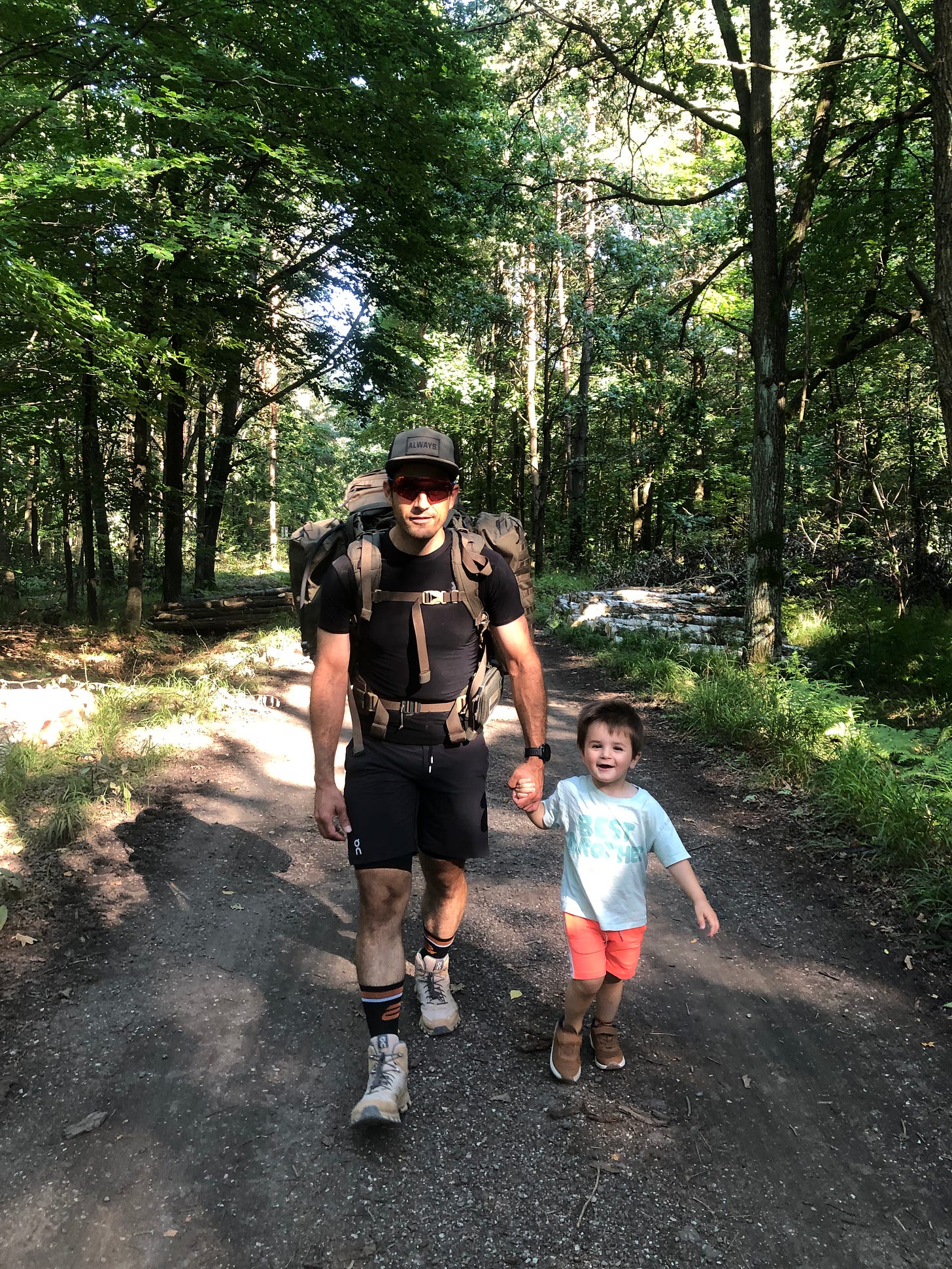How to build an ELITE Gas Tank.
Iñaki de la Parra reveals the systematic blueprint that forged his 70+ VO₂ max, Ultraman World Championship, and the endurance to outlast any man in any arena.
Building an elite gas tank is an absolute necessity for any high performing man.
The function of physical training should be to possess incredibly large reserves of energy.
To be able to work out multiple times per day.
To complete 6-8 hours of hyper focused, goal specific work.
And still have the gas left in the tank to be a present father, Flâneur at night, and run laps around your competition.
The Lethal Gentleman squeezes what the average man would do in a month, into a single week.
And in this article, we have a special guest in Iñaki de la Parra, who is going to share his world class blueprint to develop an elite gas tank.
IÑAKI DE LA PARRA’s ACCOLADES
Iñaki de la Parra isn't just another endurance athlete preaching about "going for a jog."
He's the 2016 Ultraman World Champion in Hawaii, a gruelling 515-kilometer gauntlet of swimming, cycling, and running. The ultimate test of physical & mental endurance. Over a decade at the pinnacle of human performance, he completed more than 200 races with a VO₂ max exceeding 70 mL/kg/min, numbers shared only by the elite of the elite.
But his story doesn't start with a medal. Born in Mexico, Iñaki was forged in the crucible of real work from age 12, grinding in his family's business while most kids played video games. From jai alai to combat sports, from motorsports to the ultimate test of human endurance, this man has systematically conquered every domain that demands both physical supremacy and mental fortitude.
At 42, Iñaki recently tested at 65 mL/kg/min in a proper sports science lab. Not on a smartwatch. Not on a gym treadmill. Real numbers. Real results. Real proof that elite performance isn't reserved for the young.
Today, Iñaki embodies the definition of a Lethal Gentleman. As a chemical engineer with an MBA in Global Management, he has built and sold companies across security, education, and coaching industries. He operates as a strategic advisor to CEOs and founders while maintaining the physical capacity that would humble men half his age.
Currently juggling roles as a present husband, father of two, elite-level athlete, and architect of human performance systems: Iñaki refuses to compromise excellence in any domain. He's living proof that the Lethal Gentleman doesn't choose between professional success, family leadership, and physical supremacy. He systematically dominates all three.
IÑAKI’S ELITE CLIENTELE…
Iñaki doesn’t care about social media fame. He already has a client resume that speaks volumes. Dakar rally pilots who navigate 9,000 kilometers of desert hell, ultra-runners, NASCAR and Formula drivers operating at 200+ mph, and combat sport athletes in Muay Thai, jiu-jitsu, and boxing who weaponise their bodies for a living.
But his most valued clients are elite-amateur athletes who also happen to be business founders, CEOs, and entrepreneurs, men juggling empire-building with physical supremacy.
Most impressively, Iñaki has quietly supported European special forces units in their gas tank development. True Lethal Gentlemen.
These aren't Instagram warriors or weekend hobbyists. These are operators whose endurance capacity determines mission success or catastrophic failure. Life or death scenarios where elite gas tanks aren't luxury, they're a survival necessity.
What unites every single one of these high-performers? They all demanded the same thing: an elite gas tank that could outlast any competition in any arena.
And Iñaki has systematically engineered that exact capacity across motorsports, special operations, combat sports, and boardrooms. The blueprint you're about to learn has been battle-tested at the highest levels of human performance.
THE BIGGEST MISTAKE IN ENDURANCE TRAINING…
Here's the most counterintuitive secret in elite gas tank development:
The work that builds champions looks “too easy”.
While average men are grinding through soul-crushing "cardio" sessions, gasping for air and drenched in sweat, elite performers are doing something that would make most gym-goers laugh.
Iñaki's revelation after two decades of systematic testing: 80-90% of elite endurance training should feel "too easy." So easy that your ego will rebel. So easy that you'll question whether you're actually training.
"Most people resist Zone 1 training. Their ego doesn't like it. But that's the work. Walking counts. Easy spinning counts. Hiking counts. If it builds aerobic efficiency and doesn't create fatigue, it's training."
This destroys everything most men believe about building endurance.
We've been conditioned to think that if we're not suffering, we're not improving. That without the burn, the sweat, and the exhaustion, we're wasting our time.
But elite performers understand a truth that escapes 99% of athletes: slow is not weak, it's strategic.
That top-end 10% performance only exists because of a 90% aerobic foundation. And here’s where most people get it wrong: 80% of that aerobic base should be in Zone 1—not Zone 2.
Zone 2 is just 20% of the base. Misunderstand that, and your “base training” isn’t really a baseNow let's break down exactly how to systematise this approach into the five pillars that forge elite gas tanks...
THE 5 ELITE GAS TANK PILLARS
1 - ZONE 1 IS THE FOUNDATION
Not Zone 2. Not tempo (Zone 3). Not threshold (Zone 4). Not Vo2 (Zone 5). True Zone 1. That means 80 to 90 percent of your training should feel “too easy.” Most people resist that. Their ego doesn’t like it. But that’s the work.
Walking counts. Easy spinning counts. Hiking counts. If it builds aerobic efficiency and doesn’t create fatigue, it’s training.
Slow is not weak. It’s strategic. It builds mitochondrial density, metabolic flexibility, and long-term durability. It raises the floor, which is more important than chasing the ceiling.
2- TARGET INTENSITY WHEN IT MATTERS
About 10 percent of my training is high-intensity. Meaning Zone 3, 4 & 5.
Short, focused, and only when fully recovered. I use basic intervals:
Swim in Zn 5 → 10 to 40 reps of 50 meter ON with 40 seconds full rest
Bike in Zn 4 → 4 to 6 reps of 10 min @ Zn4 with 3–5 min Zone 1
Run in Zn 3 → 2 to 3 reps of 20 min @ Zn3 with 3 min Zone 1
This keeps me sharp without compromising recovery. I monitor heart rate closely. For context, my max HR is 195, and I do most of my base training under 135 bpm. Most of it in 100 bpm to 130 bpm, regardless of the sport, or training method (run, bike, swim etc).
3- BUILD A PLAN AROUND YOUR LIFESTYLE
I begin not with the ideal scenario, but with the reality of their current life.
Movement, rather than training, is key. Maximise movement and optimise training.
This individual is likely managing a business, raising a family, and trying to train seriously. Time is limited. Energy is finite. Stress is real. And yet, they still want progress and fulfilment.
The system must reflect their available recovery capacity, not just their ambition. That is a core coaching principle I’ve learned through years of working with high-performing individuals in both sport and business.
Use these 5 pillars to build a robust, anti-fragile training system.
1. ESTABLISH ANCHORS, NOT ASPIRATIONS
Start by anchoring 2 sessions per day when possible, with full respect for the life rhythm.
Morning should be the primary training block. It is typically the only quiet, predictable window in a busy day. It sets the tone and removes decision fatigue.
Evening or lunchtime can be used for optional second sessions, but only if energy, recovery, and family demands allow. If there is a choice between an evening workout or sleep, choose sleep. Always.
2. USE A WEEKLY RHYTHM > DAILY PERFECTION
Forget rigid templates. High-performing people don’t need more rules, they need adaptable systems. That’s why I work with rhythms, not checklists.
Context matters. Training should always be individualised, so you live the life you want now, not later.
For example, I often recommend blocking off Wednesday mornings for busy people. It creates breathing room mid-week. Rather than trying to squeeze workouts into an overloaded Wednesday, I prefer they own the morning, do a long aerobic session, and handle personal priorities. This buffer day reduces weekly stress and provides a training anchor without affecting business or family quality for weekend.
In other cases, when Monday to Friday is packed with work and meetings, I help clients shift to a different structure: stack volume on the weekend, if recovery and family allows. Saturday and Sunday become dedicated training blocks. It works well when weekday bandwidth is low but weekends are more flexible.
Some people keep Sundays sacred for family, reflection, or spiritual life. In that case, we lean into Saturday as the anchor day and treat Sunday as a full rest and recovery day: active or passive, but non-negotiable.
The point is this: there is no universal weekly plan. I don’t believe in templates. I believe in systems that respect your time, your responsibilities, and your energy. The goal is to repeat a realistic rhythm, not chase a fantasy schedule that only fits in theory.
3. TRACK INPUTS MORE THAN OUTPUTS
Performance is not determined by isolated events but by the quality and consistency of inputs and process.
Track heart rate zones, sleep, nutrition, training time, and stress levels. These are the real levers of adaptation.
Outputs such as race times or metrics are unpredictable. Inputs are what we control. This is the foundation of sustainable progress.
4. MATCH INTENSITY TO LIFE STRESS
All stress counts. Training, work, relationships, sleep deprivation, and decision fatigue come from the same nervous system.
On heavy business weeks, reduce training intensity but maintain frequency.
On lighter weekends or calmer weeks, expand volume and build aerobic durability.
This is not a weakness. It is a strategy. The key is to align training stress with available recovery.
5. Simplify Nutrition and Recovery
Nutrition should be consistent, simple, and supportive of training volume and recovery.
Use a core set of meals that are easy to prepare and repeatable. Adjust macros based on training demands. Prepare food in advance to reduce decision fatigue. Hydration, sleep, and walking are not optional. They are performance tools.
Training is not something you squeeze into life. It is part of the life you are designing. The goal is not to hit a number of sessions each week. The goal is to build a system you can sustain for decades. That is where mastery lives.
4- STRENGTH TRAIN WITH INTENTION
Inaki strength trains twice a week.
“I’ve done the same plan for nearly a decade. Focused on mobility, neuromuscular coordination, and force production, not exhaustion. I’m a heavier endurance athlete (76 to 82 kg), but I rarely get injured. That’s not luck. That’s smart strength work.”
“You don’t build a big gas tank with just a strong heart. You need a strong chassis to carry it long-term.”
When it comes to developing strength, master the following 5 movement patterns:
Squat (Front, Back, Zercher)
Hinge (Trap Bar Deadlift, Romanian, Stiff Legged Deadlift)
Split Squat (Reverse Lunge, Bulgarians)
Press (Bench, Overhead, Dips)
Pull (Pendlay, Pull Up)
This is your bread & butter strength based movements, and I have even developed specific standards you can strive towards, which you can check out here.
5- LEVERAGE WALKING AS A FOUNDATIONAL WORK CAPACITY TOOL
Walking isn’t a backup plan. It’s not what you do when you’re too tired or unfit for "real" training. For me and for individuals I have coached over the years. it’s a cornerstone. Walking has kept me healthy, strong, lean, mentally grounded, and metabolically efficient through some of the most demanding seasons of life: raising kids, running businesses, returning to racing shape after years away, and supporting elite athletes and SFO on their journeys.
I’ve done 50 km ruck walks through the mountains with 35 kg on my back. I’ve built aerobic fitness in winter when running outside wasn’t practical. I’ve walked on treadmills during meetings and on trails with my kids. I’ve used walking to return to running, to maintain metabolic health, and even to quietly improve performance metrics without burning out.
“Walking works if you respect it.”
WHY IT WORKS
Metabolic Strength
Walking, especially with weight, trains the body to burn fat efficiently. It builds mitochondrial density and metabolic flexibility, which are essential for endurance sports and long-term health. I’ve consistently walked while eating normally, never chasing fat loss through calorie restriction, and lost weight naturally over months.Hormonal Balance and Blood Sugar Control
Post-meal walks, long fasted walks, or steady walking blocks help stabilise blood glucose and reduce cortisol. This is essential in high-stress seasons of life and for athletes who are often on the edge of overreaching.Durability
Before I ran a ~1:20 half-marathon off minimal running, I walked. A lot. Loaded and unloaded. On flat and hilly terrain. That foundation let me transition back into running with zero injuries and solid aerobic efficiency. No magic. Just compound effort.Muscular and Connective Tissue Adaptation
Ruck walking helped me add size to my upper body while keeping my core and posterior chain engaged. Done progressively and consistently, it’s one of the most joint-friendly strength tools I know.Mental Clarity and Recovery
My best thinking happens while walking. I take work calls, review strategy, or sometimes walk in silence. This isn’t just movement, it's recovery. It clears stress, supports HRV, and resets the nervous system.
How I Used Walking to Build Muscle and Add Size
In my 100-day reset that led to my return to serious triathlon training, I paired regular ruck walking (20–35 kg) with upper-body strength work. Ruck walks acted as loaded carries with a cardio base. Think about walking uphill with 30+ kg for 2 to 3 hours. That’s not low-load movement. That’s a stimulus.
My shoulders, back, and trunk grew stronger without extra gym hours. Shirts fit tighter. Pull-ups improved. And all of this without sacrificing my endurance base. For someone returning to high-level aerobic training, this balance of hypertrophy and stamina was a perfect bridge.
IÑAKI’S PROGRESSION CRITERIA
Whether for myself or coaching others, I apply the same progression principles to walking as I do to running or cycling:
Volume First
Start with 30 to 60 minutes per day. Build to 90 minutes or multi-hour walks, depending on your goals. No added weight.Frequency Over Intensity
Daily walking > heroic long hikes once a week. Movement rhythm matters.Load Progression
Start unloaded. Add 5 kg. Work toward 20 to 40 kg for rucking, only when form and movement patterns are clean. Carry weight for time or terrain, not speed.Terrain Progression
Flat → Mixed terrain → Hills → Mountains. Let terrain do the work.Integration with Life
Take walking meetings. Stack walks around family time. Use walking to transition between high-focus work blocks.
If you're a parent, a busy professional, a returning athlete, or someone building toward endurance goals, walking isn’t optional, it's strategic. It's not just for recovery or rest days. It’s for building the capacity you’ll later need to absorb harder training.
Start by walking before you run. Then never stop walking even once you're running again.
BUILD YOUR ELITE GAS TANK WITH IÑAKI’S 5 PILLARS
PILLAR 1: ZONE 1 SUPREMACY The Foundation That Humble Egos Build
80-90% of your training should feel "embarrassingly easy." Walking counts. Easy spinning counts. Hiking counts. If it builds aerobic efficiency without creating fatigue, it's training that builds champions.
Slow isn't weak—it's strategic. This builds mitochondrial density, metabolic flexibility, and bulletproof durability. Most men's egos can't handle this reality.
PILLAR 2: SURGICAL INTENSITY STRIKES When 10% Changes Everything
The remaining 10% is where legends are forged. Brutal VO2 max sessions. Threshold work that pushes your cardiovascular system to its absolute limits. But only when fully recovered.
Iñaki's Protocol:
Swim: 10-40 x 50m all-out with 40 seconds rest
Bike: 4-6 x 10min at threshold with 3-5min recovery
Run: 2-3 x 20min tempo with 3min recovery
Heart rate 100-130 BPM for base work. Surgical precision when it's time to strike.
PILLAR 3: LIFESTYLE ARCHITECTURE Systems That Respect Reality
Build around your life, not against it. Anchor morning sessions when the world is quiet. Use weekly rhythms over daily perfection. Track inputs (sleep, nutrition, stress) more than outputs (times, distances).
The Principle: Match training intensity to life stress. Heavy business week = reduce intensity but maintain frequency. Light weeks = build aerobic volume.
Elite Integration: Walking meetings. Family trail time. Wednesday morning breathing room for busy executives.
PILLAR 4: INTENTIONAL STRENGTH The Chassis That Carries Champions
2-3 sessions weekly. Focus on mobility, neuromuscular coordination, and force production not exhaustion.
Master the Big 5:
Squat (Front, Back, Zercher)
Hinge (Trap Bar, Romanian, Stiff Leg)
Split Squat (Reverse Lunge, Bulgarian)
Press (Bench, Overhead, Dips)
Pull (Pendlay Row, Pull-Ups)
Iñaki's Truth: "You don't build a big gas tank with just a strong heart. You need a strong chassis to carry it long-term."
PILLAR 5: WALKING AS WARFARE The Most Underestimated Elite Tool
50km mountain rucks with 35kg. Treadmill meetings. Family trail adventures. Walking built the foundation for Iñaki's 1:20 half-marathon with minimal running prep.
Learn more about Iñaki…
To read more of Iñaki’s work, I suggest subscribing to his substack below, he is also currently offering 1 more coaching spot for a founder looking for support in life systems: health, business, and family.
It is a minimum 18 month commitment.
If this interests you, DM Iñaki to find out more.













Just do more outside activities. Bike, sprints, hiking, all sorts of things.
It’s not that complicated. We are meant to be in nature. Go outside and move.
Love this. I’ve been doing a lot more easy daily movement practices like walking and rope flow and my recovery has been so much better